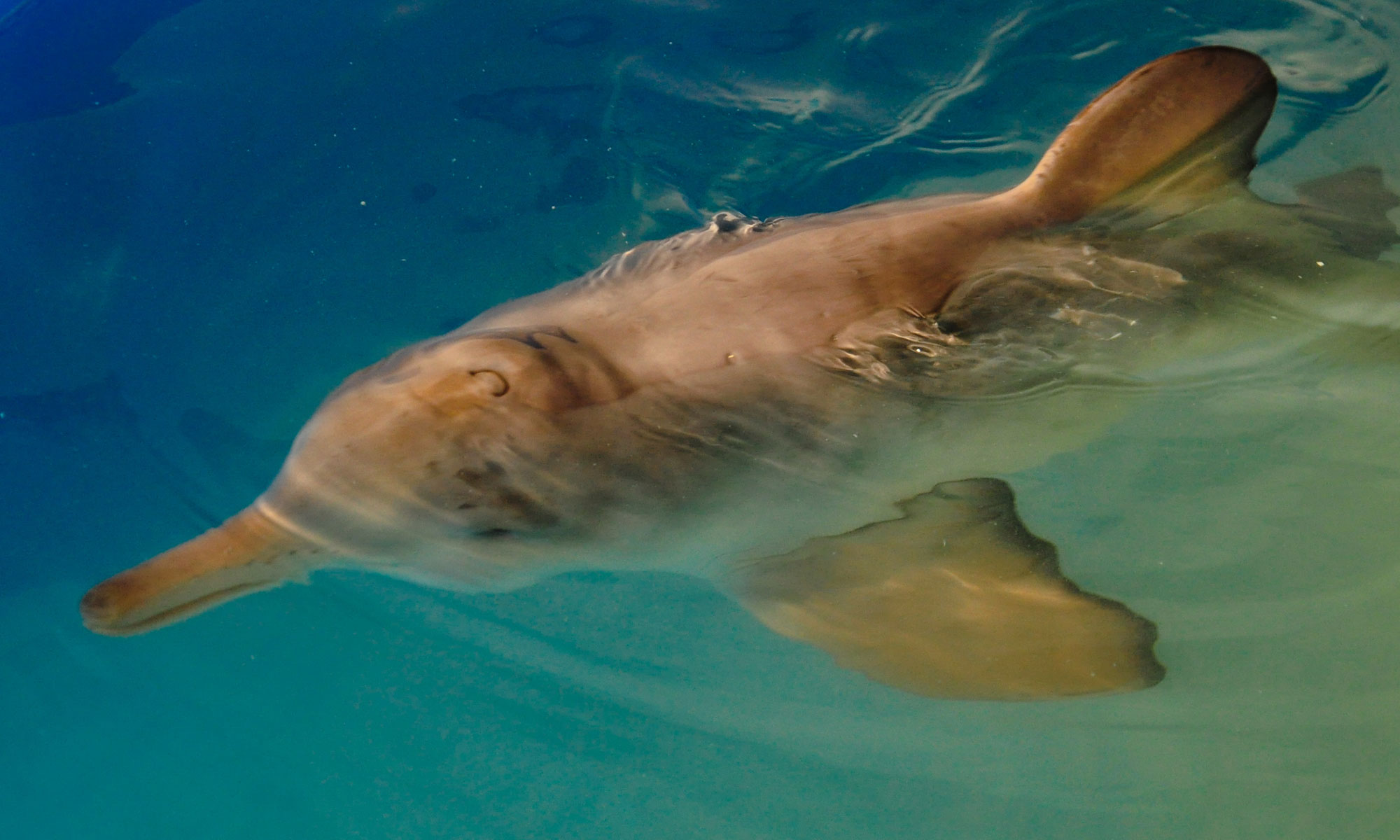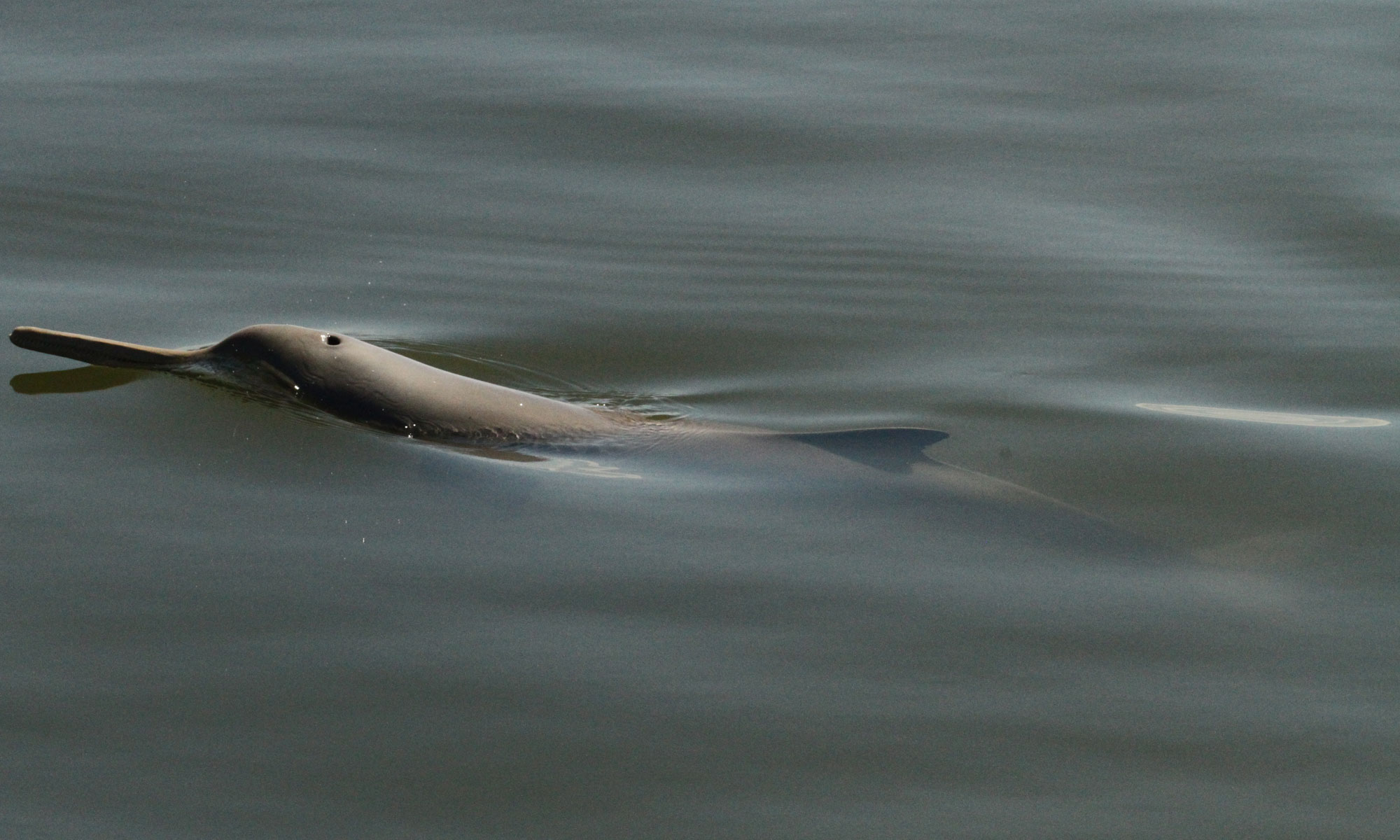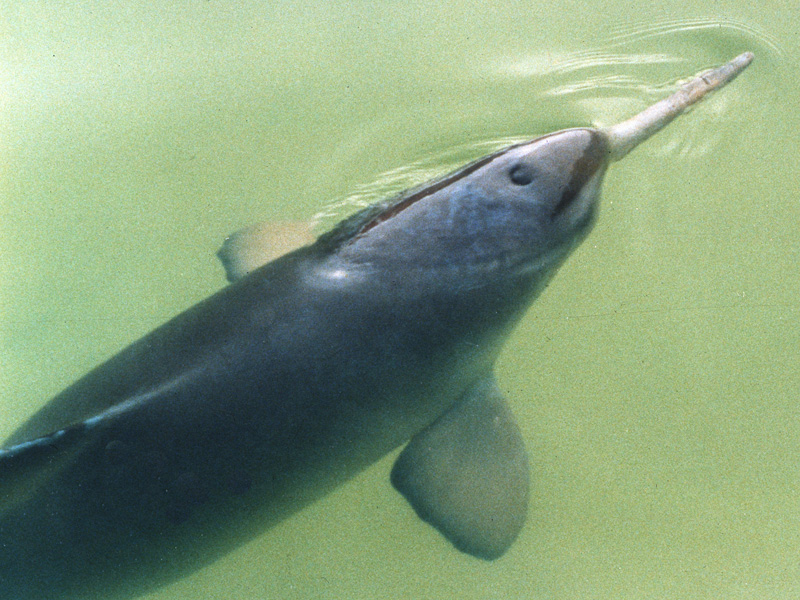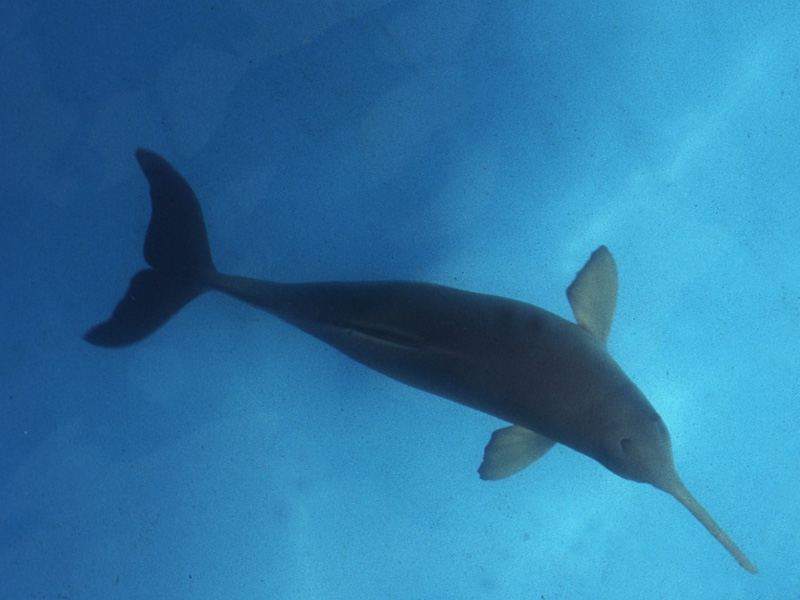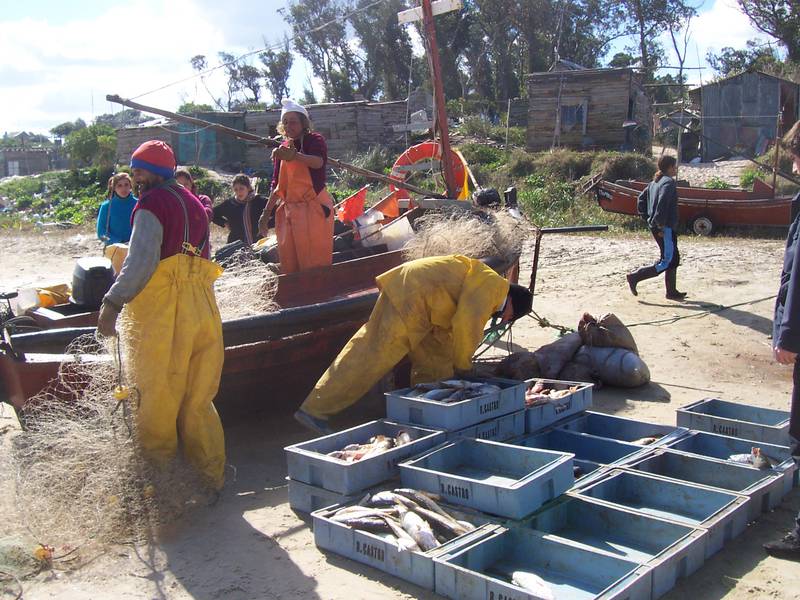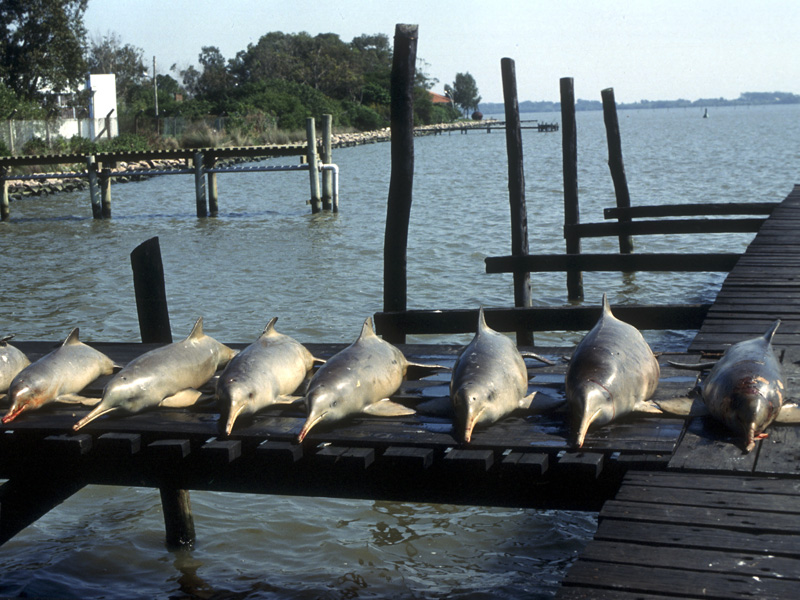The La Plata dolphin or Franciscana – Toninha (Pontoporia blainvillei) is one of the smallest dolphin species with a maximum body length of 1.70 m and a body weight of 45 kg. In Brazil he is called Toninha. It has a grey-brown colour, with the back usually being slightly darker than the belly. The head is very round and the beak is exceptionally slender and long. In relation to body length, this is the longest beak of all dolphin species. The fin is triangular with a rounded tip and is well developed compared to the other river dolphin species. The flippers are extremely wide.
Although it belongs to the river dolphins, the La Plata dolphin is a predominantly marine species. Its range is limited to the coastal areas of Atlantic waters of South America from Espirito Santo, Brazil to the Valdez Peninsula, Argentina. The animals prefer shallow coastal waters and are rarely seen in water depths of over 20 meters.
In terms of behavior, La Plata dolphins are rather shy and inconspicuous and lack the acrobatic jumps typical of many dolphin species. They live in small groups of up to five animals, but are usually only sighted as solitary animals. The gestation period is about 10 to 11 months. The calves are mainly born in the months from November to January and then suckled by the mother for about 9 months. La Plata dolphins often swim on their backs or lying on their sides. This behaviour has also been observed in other river dolphins and is associated with the echolocation behaviour of the animals. Due to the direction of transmission of the echolocation clicks (dorso-frontal) and the dolphins' search for food, this swimming position is extremely useful for tracking prey on the seabed or river floor.
Dangers
Since the La Plata dolphin – Franciscana – Toninha (Pontoporia blainvillei) lives mainly near the coast, it is particularly sensitive to anthropogenic influences. The increasing pollution of the waters by toxic chemicals and the regional fishing industry have greatly reduced the population in recent decades. Coastal fishing and the resulting high number of bycatch victims are particularly worrying. Due to overfishing of its prey fish, the La Plata dolphin has already been driven out of some areas of the original distribution area.

Meanwhile, the Franciscana dolphin – Toninha is the most endangered dolphin species in South America.
You can help us here specifically to protect the La Plata dolphin.
Project La Plata dolphin | Project Amazonas dolphin | Vaquita | Chilean dolphin | Videos | Bottlenose dolphin | Team Latin America | Species protection | Animal protection | Species that YAQU PACHA is working to protect | Fishermen in Brazil and the Toninha | 25 years of Franciscana - Toninha research | Dia da Toninha | Flight counts Uruguay
